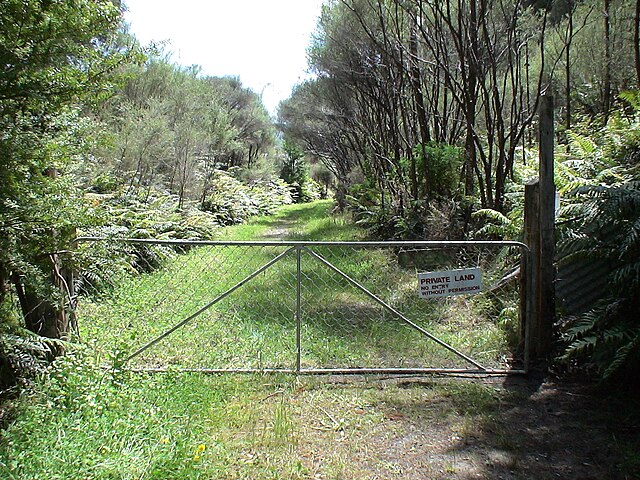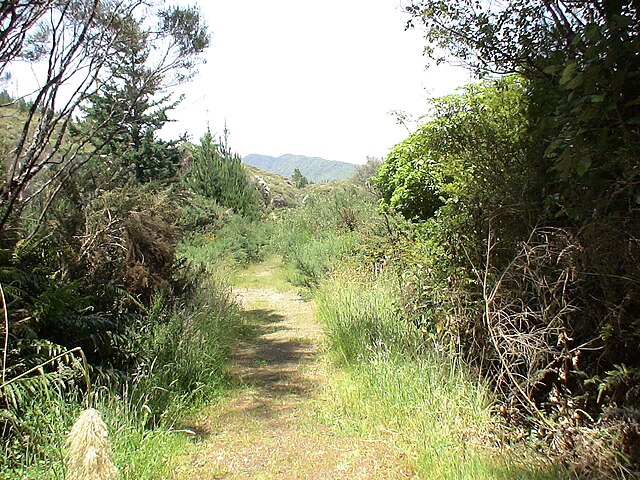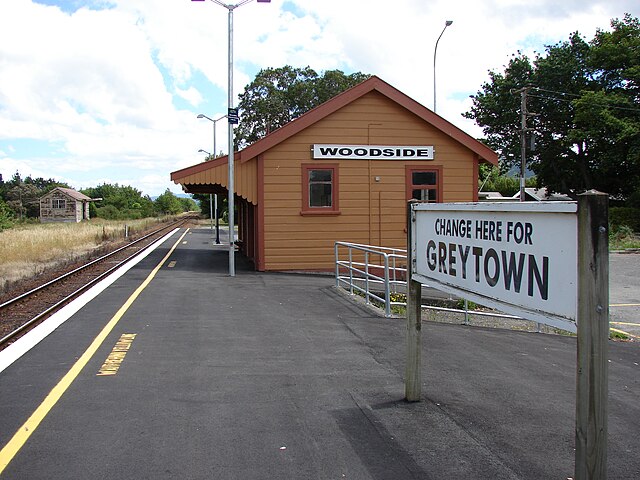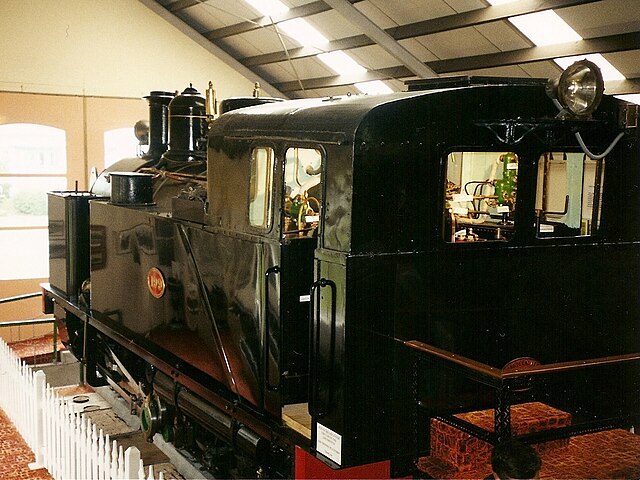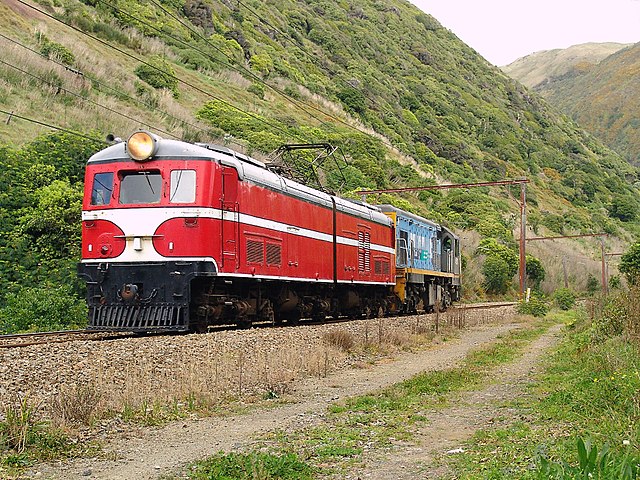Kaitoke railway station was a single-platform rural railway station on the Wairarapa Line between Upper Hutt and Featherston in the Wellington region of New Zealand's North Island. Initially it was the railhead of the Wairarapa Line, at a point where the railway met the main road between Upper Hutt and the Wairarapa. Later it was a point at which locomotives were changed, steam engines were watered, trains could cross, and passengers could make use of the refreshment room.
The gate on the southern approach to Kaitoke station that marks the end of public access and the boundary of private property that includes the former Kaitoke station yard.
Kaitoke station northern approach. The access road that connects with the Rimutaka Rail Trail (bottom) cuts through the original northern approach formation. Also visible is one of the houses erected on the Kaitoke station yard area.
The last 240 metres of the southern approach to Kaitoke station with public access is disused and overgrown.
Station Drive, formerly an access road to Kaitoke Station, now providing access to several private dwellings on the former station site.
The Wairarapa Line is a secondary railway line in the south-east of the North Island of New Zealand. The line runs for 172 kilometres (107 mi), connects the capital city Wellington with the Palmerston North - Gisborne Line at Woodville, via Lower Hutt, Upper Hutt and Masterton.
Woodside railway station
One of the special locomotives employed on the Rimutaka Incline, H 199, now preserved at the Fell Engine Museum.
EW1805, which operated on the Hutt Valley Line. It survived for preservation and is seen here with DC4611 near Paekākāriki on the North Island Main Trunk railway.
E 66 at Petone Workshops in February 1906, just after it was built.

